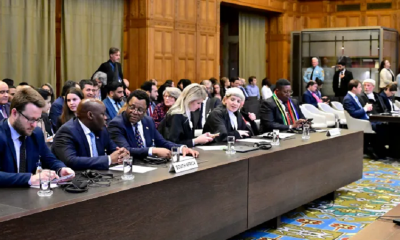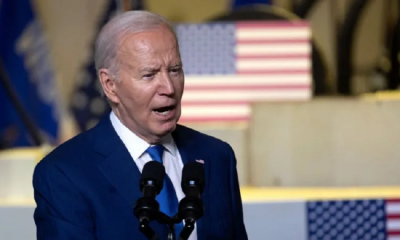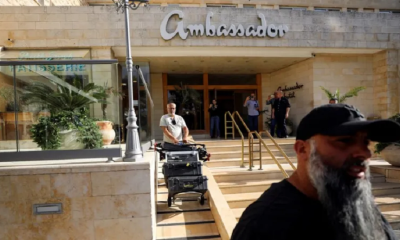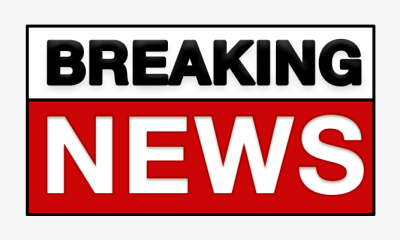Latest News
Israel’s new Gaza evacuation zones leave Palestinians few places to go
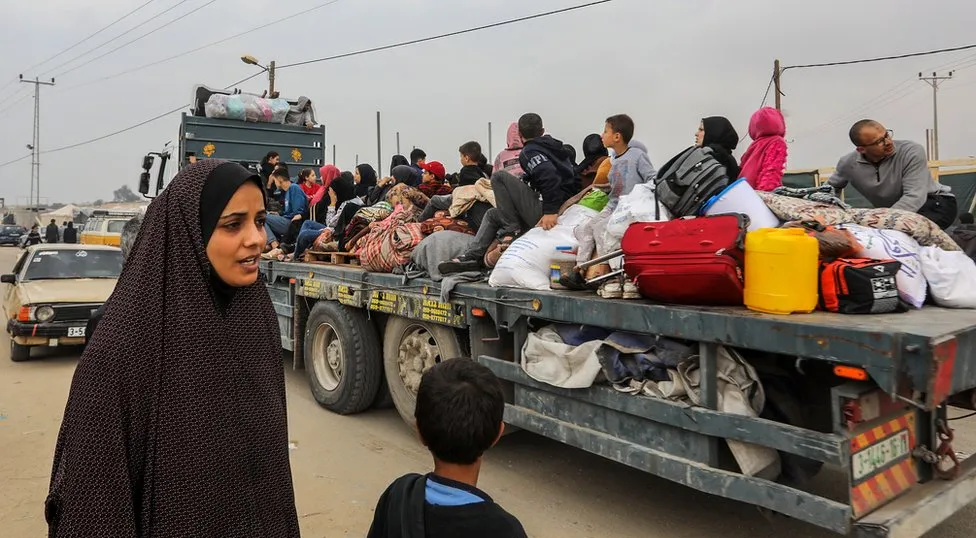
Aid agencies are warning that Palestinian civilians are running out of places to flee to, after the Israeli military first ordered tens of thousands to evacuate part of the main city in the south ahead of an assault by tanks and troops.
A map posted on social media on Monday told people in northern and central Khan Younis to leave immediately to “preserve your safety and security”. Arrows directed them to move to three already overcrowded areas to the south and west.
On Tuesday however, the Israeli military said its forces had already entered the city and it was now too dangerous to leave.
“Don’t get out. Going out is dangerous. You have been warned,” new leaflets said, warning people to stay inside designated shelters and hospitals.
The evacuation of specific areas marked on online maps is part of a new approach the military says it is taking to avoid civilian casualties in its eight-week war with Hamas, following heavy pressure from the United States.
But there is concern that the strategy is too complicated, too dependent on technology, and too likely to cause panic to be a workable solution.
BBC Gaza correspondent Rushdi Abu Alouf, who is currently in Istanbul, said he had spoken to relatives and other people in the affected areas who were not aware of the IDF’s map or could not see it because of patchy internet access and no regular supply of electricity.
“This is a joke, not a map, because we don’t know where to go,” a displaced person who was sheltering in Khan Younis told him. There is also no guarantee they will be safe from bombardment if they flee.
The main Palestinian telecommunications firm meanwhile said that all phone and internet services were cut once again.
Before a temporary truce collapsed last Friday, the Israeli ground operation was focused on the north of Gaza.
The Israel Defense Forces (IDF) issued a blanket order to all 1.1 million people living there to move south of the Wadi Gaza river for their own safety. Hundreds of thousands heeded the call as Israeli troops penetrated deep into Gaza City – with many of them eventually ending up in Khan Younis.
The IDF also repeatedly urged civilians across Gaza to move to al-Mawasi, a thin strip of territory along the Mediterranean coast which officials described as a “humanitarian zone”.
During a visit to Israel on Thursday while the fighting was paused, US Secretary of State Antony Blinken said he had told Israeli leaders that they had to “put in place humanitarian civilian protection plans that minimize further casualties of innocent Palestinians”. These included “clearly and precisely designating areas and places in southern and central Gaza where they can be safe and out of the line of fire”, he added.
The IDF’s response was to publish on its Arabic-language website on Friday an ‘Evacuation Zone Map’ that divided Gaza into more than 600 numbered blocks, ranging in size from about 0.03 to 25 sq km (0.001 to 9.6 sq miles).
Jets also dropped leaflets with QR codes, allowing people with a working smartphone and an internet connection to access the map – and also asking them to share their location.
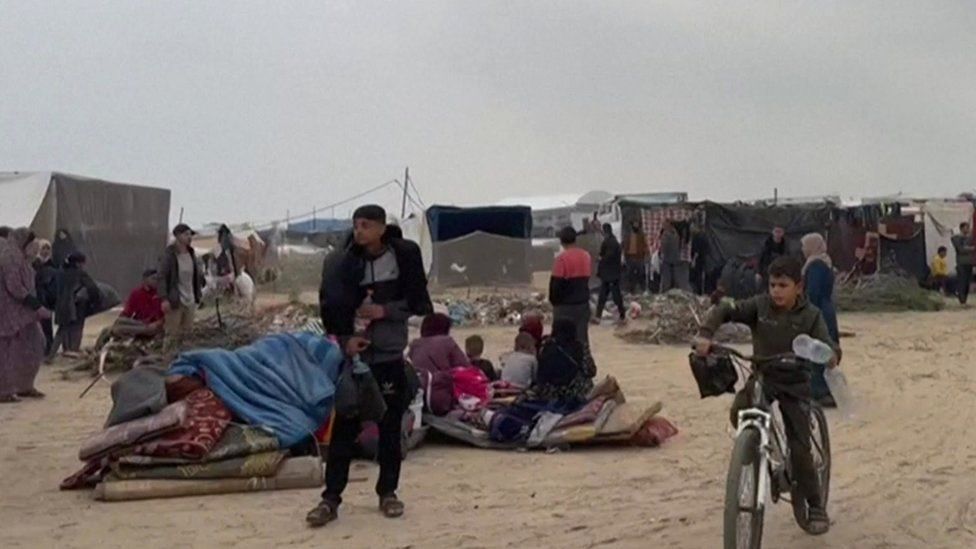
Asked about this approach on Monday, US state department spokesman Matthew Miller said it had “seen improvements”. “We have seen them evacuate specific neighbourhoods, rather than entire areas, so the number of displaced persons will hopefully be lower in southern Gaza than it was in the north,” he added.
However the IDF’s order for civilians to move from Khan Younis to Rafah was condemned by the head of the UN agency for Palestinian refugees, Unrwa, which runs the biggest humanitarian operation in Gaza and has 958,000 displaced people sheltering at 99 facilities in the south.
“The order created panic, fear and anxiety,” warned Philippe Lazzarini on Monday evening. “At least an additional 60,000 people were forced to move to already overcrowded Unrwa shelters, with more asking to be sheltered.” “The evacuation order pushes people to concentrate into what is less than one-third of the Gaza Strip,” he added.
Lazzarini also stressed that “no place is safe in Gaza, whether in the south, or the south-west, whether in Rafah or in any unilaterally called ‘safe zone'”.
Unicef spokesman James Elder, who was recently in Gaza, told the BBC on Tuesday that the idea of a “safe zone” was a “dangerous false narrative”. He said that under international law Israel had to ensure places of evacuation had conditions for people to survive.
In an apparent reference to al-Mawasi, he added: “These are tiny patches of barren land. They have no water, no facilities, no shelter from the cold, no sanitation.”
A senior adviser to Israel’s prime minister rejected such criticism in a BBC interview on Monday.
“I don’t believe that nowhere is safe,” Mark Regev said. “We’ve designated safer zones for people to go to. If you believe the Hamas propaganda, we’re just hitting innocent buildings, right? But if we’re hitting a structure, it’s because there’s Hamas either in or under the structure.”
Gaza’s Hamas-run health ministry says 70% of the almost 15,900 people killed there since the start of the conflict have been women and children.
Israel launched a military campaign in response to a cross-border attack by Hamas gunmen on 7 October, in which at least 1,200 people – including many women and children – were killed and about 240 others taken hostage.
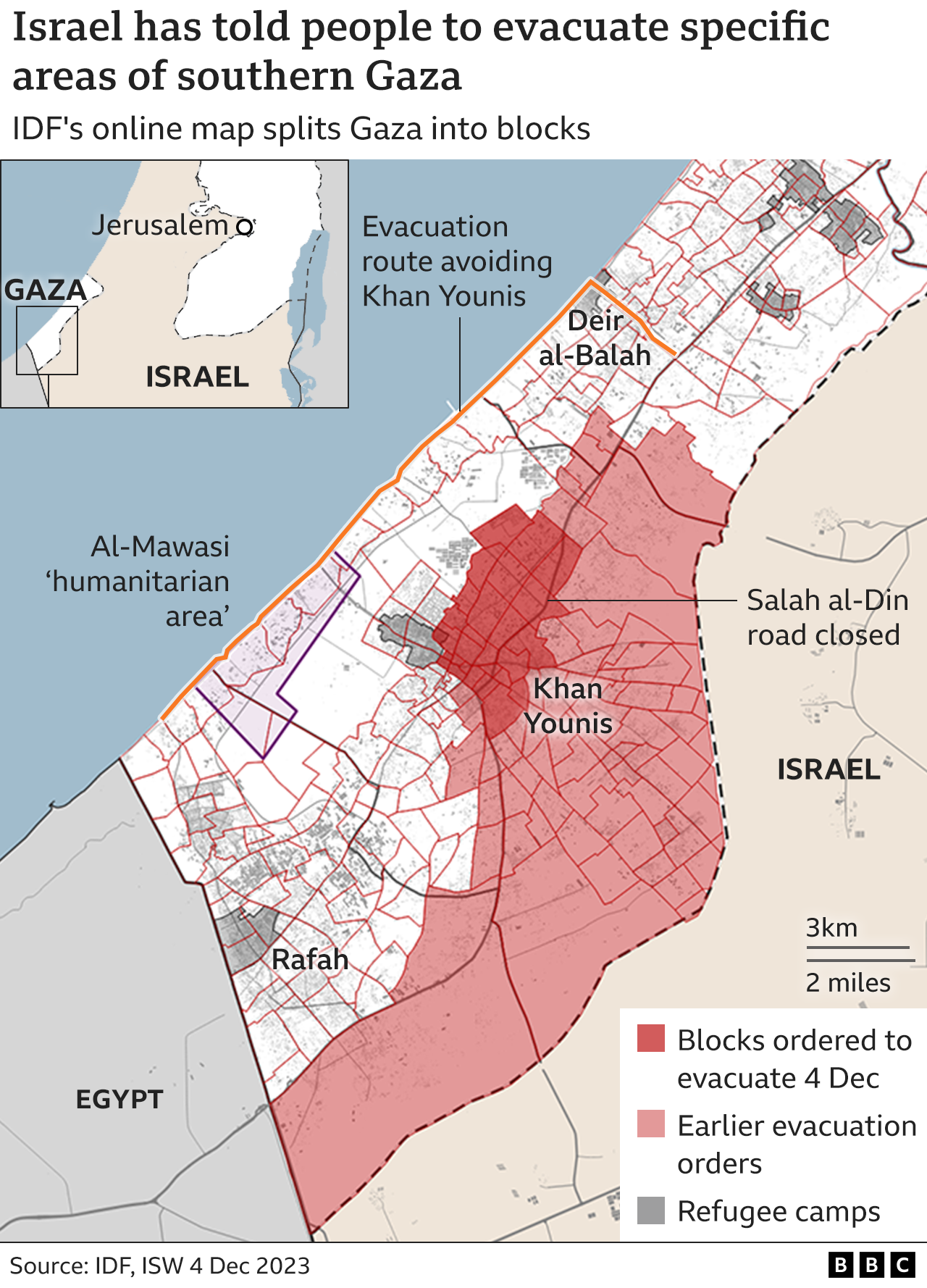
Latest News
Level III landslide early warnings issued to the Districts of Kandy, Kegalle, Kurunegala and Matale extended

The landslide early warning center of the National Building Research Organisation [NBRO] has extended the Level III RED landslide early warnings issued to the Districts of Kandy, Kegalle, Kurunegala and Matale until 1600hrs on 11th December 2025.
Accordingly,
The LEVEL III RED landslide warnings issued to the the Divisional Secretaries Divisions and surrounding areas of Kundasale, Pasbage Korale, Medadumbara, Ganga Ihala Korale, Hatharaliyadda, Pathadumbara, Doluwa, Panvila, Gangawata Korale, Ududumbara, Akurana, Yatinuwara, Harispattuwa, Deltota, Thumpane, Poojapitiya, Udapalatha, Udunuwara, Minipe and Pathahewaheta in the Kandy district, Aranayaka, Yatiyanthota, Rambukkana, Bulathkohupitiya and Mawanella in the Kegalle district, Mallawapitiya, Mawathagama and Rideegama in the Kurunegala district, and Rattota, Laggala Pallegama, Ukuwela, Matale, Wilgamuwa, Pallepola, Naula, Yatawatta and Ambanganga Korale in the Matale district have been extended.
LEVEL II AMBER landslide early warnings have been issued to the Divisional Secretaries Divisions and surrounding areas of Uva Paranagama, Hali_Ela, Meegahakivula, Badulla, Kandeketiya, Bandarawela, Soranathota, Ella, Haputhale, Lunugala, Welimada, Haldummulla and Passara in the Badulla district, Warakapola, Galigamuwa, Kegalle, Dehiowita, Ruwanwella and Deraniyagala in the Kegalle district, Polgahawela and Alawwa in the Kurunegala district, Kothmale East, Walapane, Thalawakele, Nuwara Eliya, Kothmale West, Nildandahinna, Mathurata, Ambagamuwa Korale, Hanguranketha and Norwood in the Nuwara Eliya district. and Kolonna, Godakawela and Kahawaththa in the Ratnapura district.
LEVEL I YELLOW landslide early warnings have been issued to the Divisional Secretaries Divisions and surrounding areas of Divulapitiya, Attanagalla and Mirigama in the Gampaha district, Narammala in the Kurunegala district, and Kiriella, Eheliyagoda, Balangoda, Kaltota, Openayake, Nivithigala, Imbulpe, Ayagama, Kuruwita, Kalawana, Elapatha, Pelmadulla and Ratnapura in the Ratnapura district.
Latest News
Russia gifts 35 tonnes of Humanitarian Aid to Sri Lanka
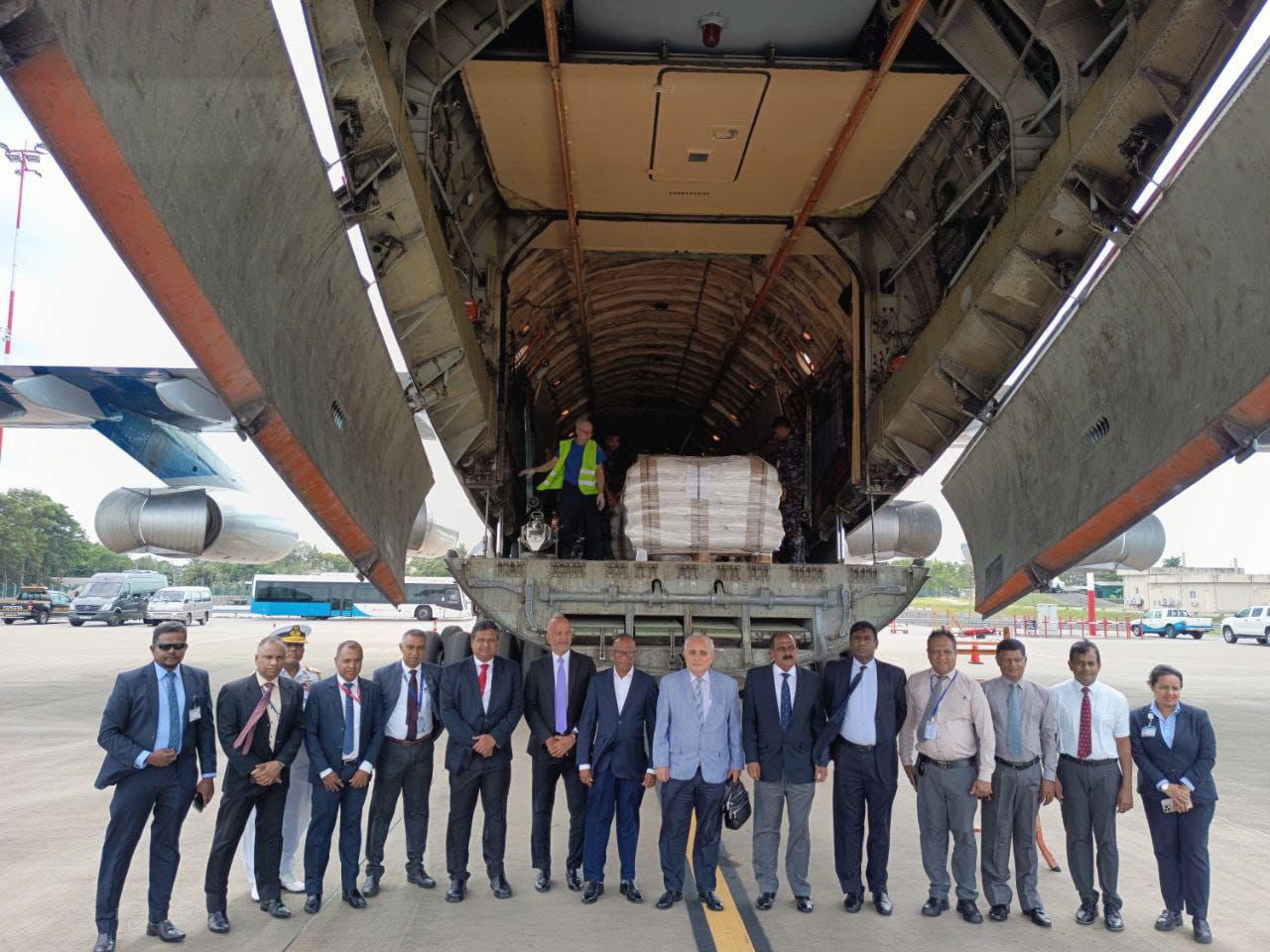
The handover of 35 tonnes of Russian Humanitarian Aid to Sri Lanka, recently affected by the cyclone «Ditwah», took place at Katunayake today (10th December)
The shipment was welcomed at the Katunayake airport by Ambassador of Russia Levan Dzhagaryan, Minister of Ports and Civil Aviation Anura Karunathilaka and Deputy Minister of Defence, Major General Aruna Jayasekara (Retd).
Ambassador Levan Dzhagaryan: said “This delivery is a reflection of long-term friendly relations between Russia and Sri Lanka and reaffirms Moscow’s commitment to support countries in a difficult humanitarian situation.”
The supplies brought by the EMERCOM (Russian Ministry of Emergency Situations) aircraft comprised a movable 60 kW electric power station, Pumping equipment for water drainage, Summer tents (10-person capacity) and Food supplies (sugar, vegetable oil, rice)
The total cargo weight is 35 metric tonnes. The aid will be distributed among the most affected regions.
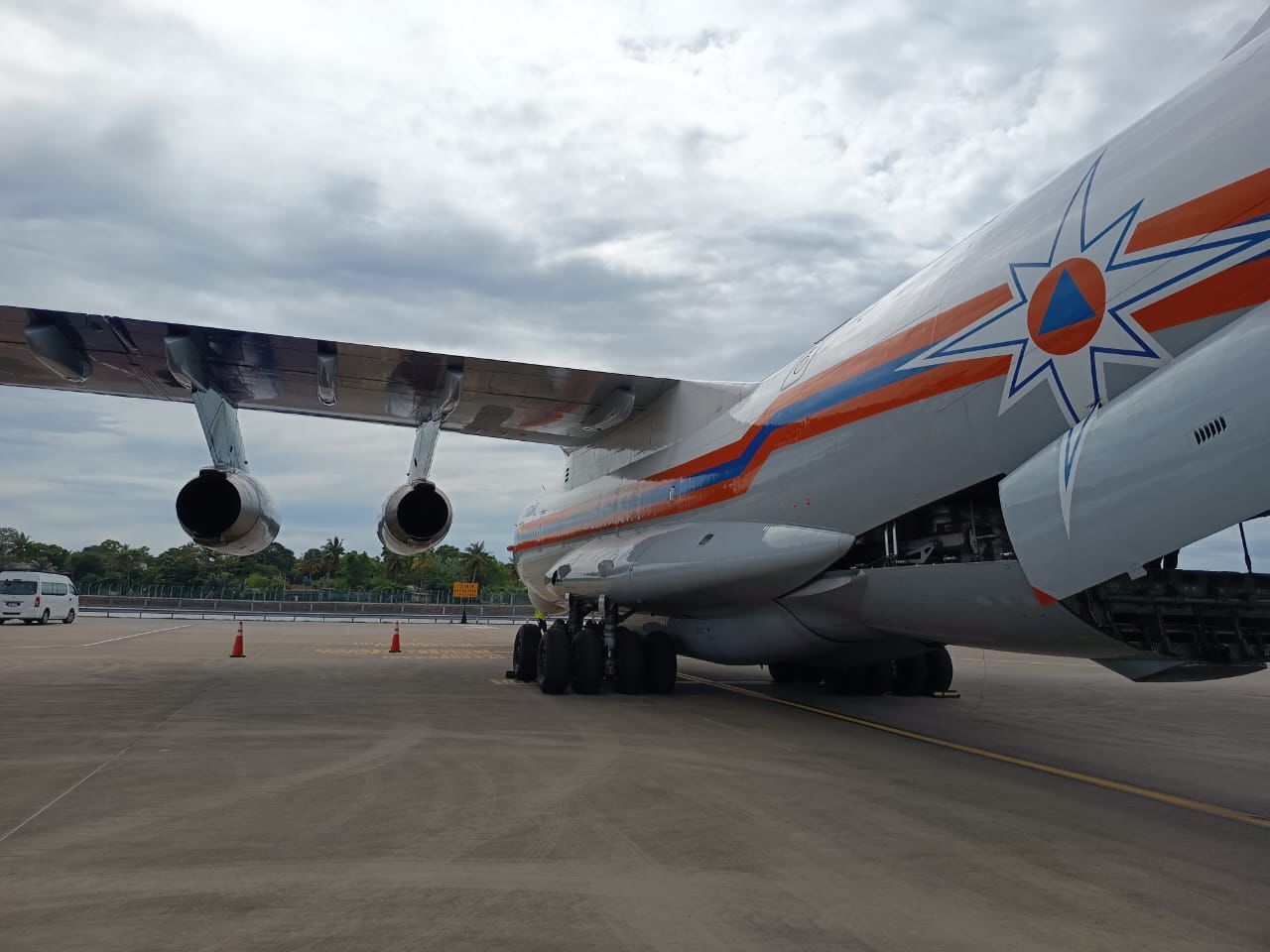
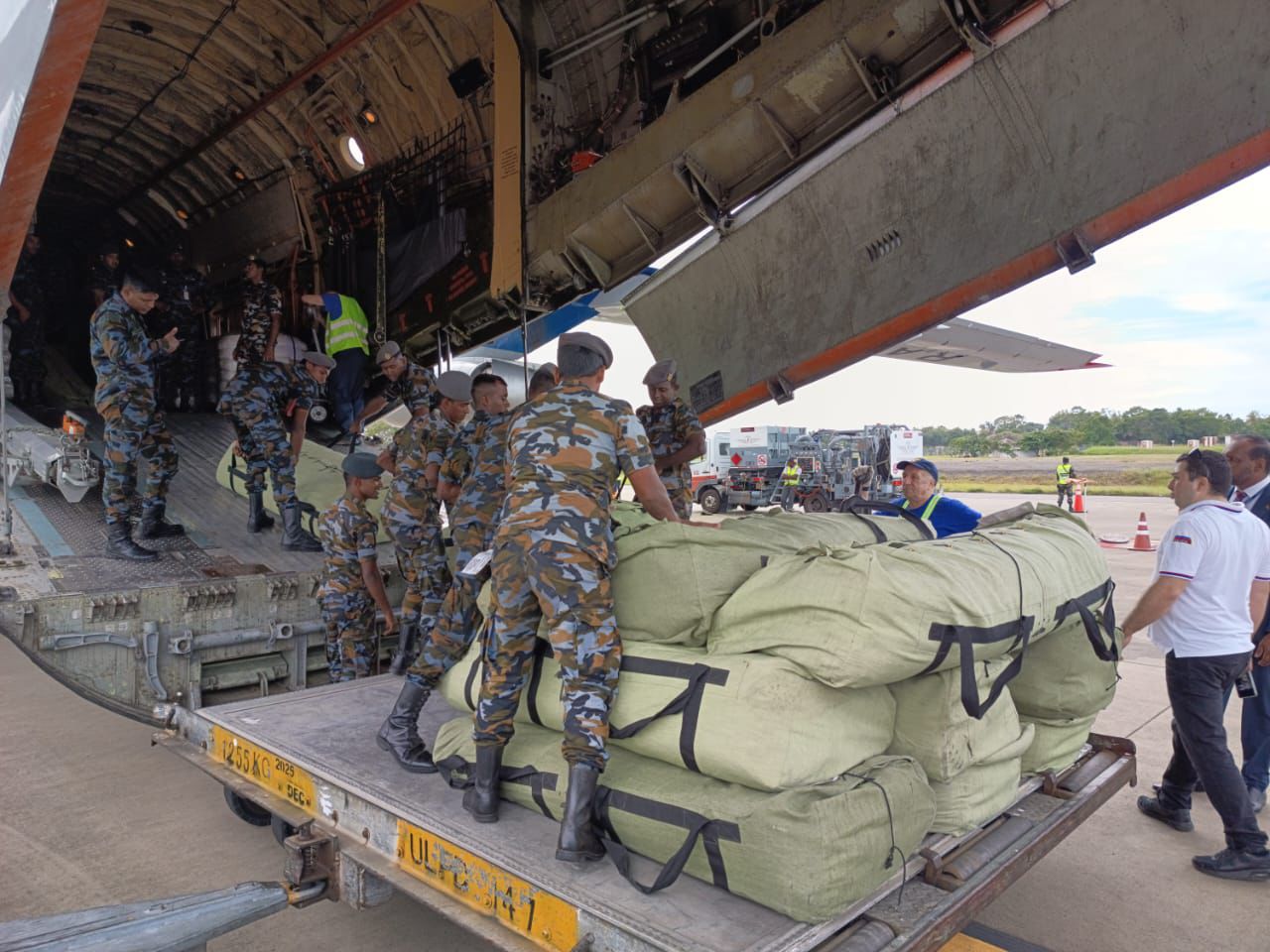

Latest News
Sri Lanka squad named for ACC Men’s U19 Asia Cup
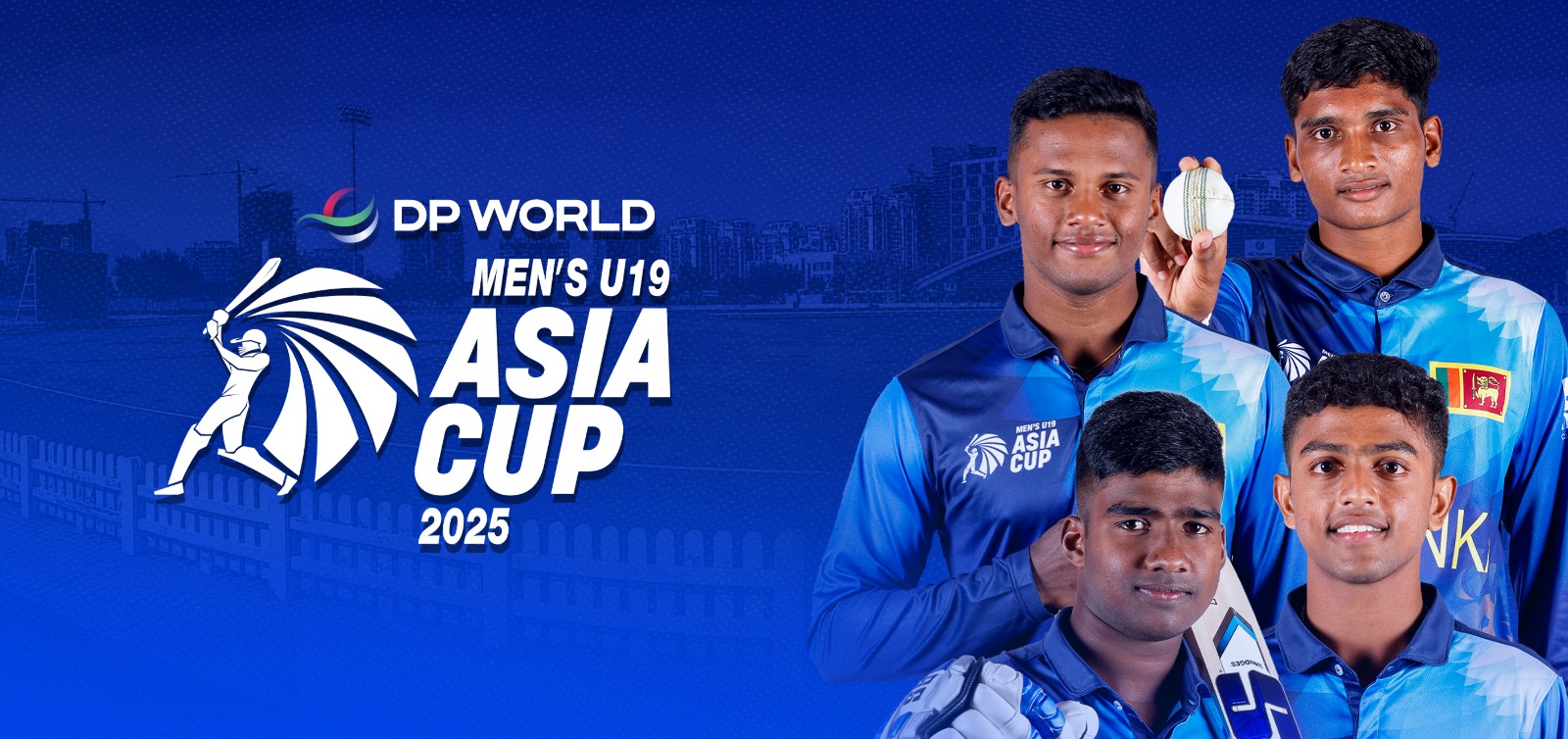
Sri Lanka Cricket Selection Committee has named a 15-member squad to participate in the upcoming ACC Men’s U19 Asia Cup (50 Over).
The team will depart for the United Arab Emirates today [0 December 2025] and has been placed in Group B, alongside Nepal, Afghanistan, and Bangladesh.

-

 News3 days ago
News3 days agoOver 35,000 drug offenders nabbed in 36 days
-
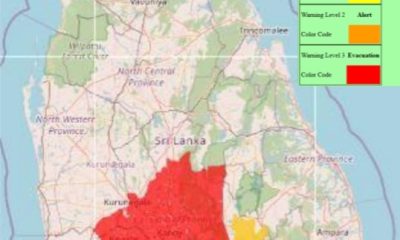
 News7 days ago
News7 days agoLevel III landslide early warning continue to be in force in the districts of Kandy, Kegalle, Kurunegala and Matale
-

 Business5 days ago
Business5 days agoLOLC Finance Factoring powers business growth
-

 News5 days ago
News5 days agoCPC delegation meets JVP for talks on disaster response
-

 News2 days ago
News2 days agoCyclone Ditwah leaves Sri Lanka’s biodiversity in ruins: Top scientist warns of unseen ecological disaster
-

 News5 days ago
News5 days agoA 6th Year Accolade: The Eternal Opulence of My Fair Lady
-

 News3 days ago
News3 days agoRising water level in Malwathu Oya triggers alert in Thanthirimale
-
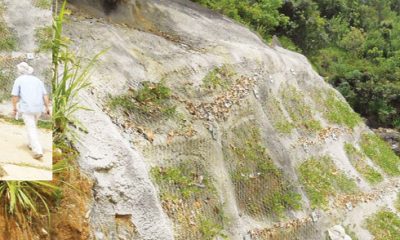
 Features4 days ago
Features4 days agoThe Catastrophic Impact of Tropical Cyclone Ditwah on Sri Lanka:




